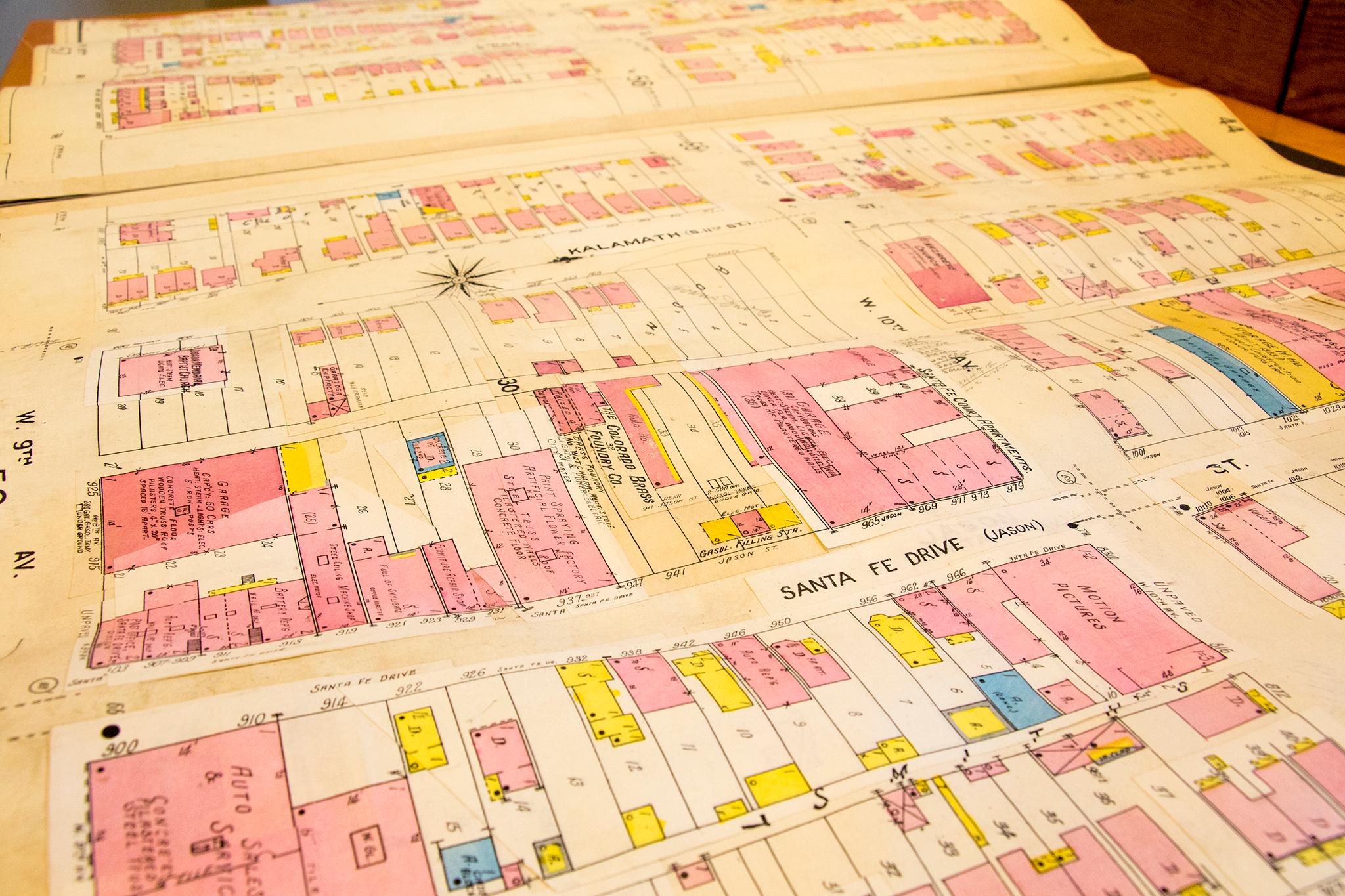As we wrap up Map Week, our winter cartographic celebration, we thought some people might want to carry the torch forward into 2019 and keep learning on your own. If this sounds like you, then we've got some info to help you get started:
Denver Public Library has tons of info, and they really do want to help you.
The first time I went into the Western History Collection in the central library's fifth floor, I was a little unsure about how to approach the librarians there. Let me just say, they love helping people; don't be afraid.
Senior librarian James Rogers, who can often be found behind the desk up there, said this misconception is normal.
People think "we're these sacred librarians," he told us. Think again: "We have a friendly crew. We want to make sure everything is open to people."

OK - first item down, these folks are here to help. But Rogers said people interested in researching their homes or other buildings around town might best be served by starting at the Western History Collection's website.
The history of Denver's buildings is one of the most asked-about topics at the library, second only to genealogy, so DPL librarian Hannah Parris put together a tutorial to get people going in the right direction.
Accessing information on a building can differ based on when it was built, so Parris recommends finding that out first. You can search a property by its address at the city's property assessment page. Enter the address, click the listing when it pops up below and then scroll down to find the building's construction year and some other odds and ends.
Parris' guide includes info on how to find who built your home, though it's not always straightforward since records from different eras are collected in different places.
If your home was constructed before 1915, you can try to search for it at over at DPL's building permit section online to learn about the architect. This is not so easy, since these old structures did not have addresses listed on their permits. You can search permits for buildings erected between 1915 and 1955 in permits captured in microfilm and kept on DPL's fifth floor. For those, go up there and ask for help! Rogers said permits for years between 1955 and the mid '70s have mysteriously disappeared, so you're out of luck there. For more recent permits, you can search the city's database.
So searching around online is a bit limited. Take a look at the tutorial and through some of the above links when you're starting out, but I highly recommend just going to the fifth floor to access some real gems.

The most interesting tool at DPL are the Sanborn fire insurance maps, which are these huge tomes that map out blocks of the city for the early half of the 20th century. The library has a couple of volumes, one from 1887, one that spans from 1903 to 1928, another from 1929 to 1962 and a final volume from 1974 that's just limited to downtown. When you find the section you're looking for, you can see most of what occupied every lot on the block. For the volumes that span some years, new additions were actually glued on top of outdated parts of the map, so you can sometimes see "back in time" through the paper on top.
Another good place to look is through volumes of old business and residential directories, which are pretty easy to scan by street address. Most of the older ones are organized by street, and list cross streets as you make your way down each column. I used those when we were trying to figure out the history of an old theater near Lakeside. These books will tell you, in any given year, what business was located or what person lived at an address, if any. The theater, for instance, showed up as the Yates in 1929, then vacant in 1930, and then was listed as the Rex Theater from 1931 to some time in the 40s. Some years are missing, so we weren't able to pinpoint the exact year it the Rex closed, but it was listed again as vacant in 1948.

"It's difficult for a novice to know what they're doing," Rogers admitted. The process for finding history on a specific building is super variable from one property to the next.
So, he said: "Please come in if you're confused."
But you never know, you just might find a gem in their archives. I always do, even if it's not what I went searching for.
Happy digging. If you do find something cool, please do share it with us by emailing [email protected]!













